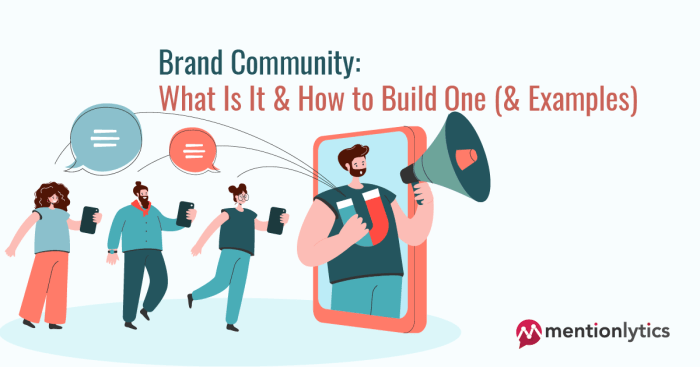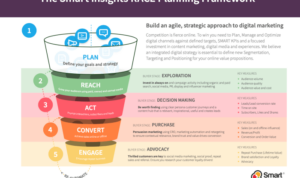Building an Online Brand Community sets the stage for businesses to connect with their audience in a whole new way, fostering loyalty and engagement like never before. Get ready to dive into the world of brand communities and discover the secrets to building lasting relationships online.
Importance of Building an Online Brand Community
Building an online brand community is crucial for businesses in today’s digital age. It allows companies to connect with their customers on a more personal level, fostering loyalty and trust.
Enhancing Customer Loyalty
- By creating a platform where customers can interact with each other and with the brand, businesses can build a sense of belonging and exclusivity.
- Responding to customer feedback and addressing their concerns promptly can show a commitment to customer satisfaction, leading to increased loyalty.
- Offering exclusive deals, content, or events to community members can make them feel valued and encourage repeat business.
Examples of Successful Online Brand Communities
- Apple’s online community, where users share tips, tricks, and troubleshooting advice, has significantly boosted customer engagement and brand loyalty.
- Lululemon’s “Sweat Collective” program offers perks to fitness instructors and brand ambassadors, creating a dedicated community of advocates for the brand.
- The Sephora Beauty Insider community provides a platform for beauty enthusiasts to share reviews, tips, and recommendations, driving brand awareness and sales.
Benefits of Fostering a Strong Brand Community
- Increased customer engagement through regular interactions, discussions, and feedback.
- Higher customer retention rates as loyal community members are more likely to make repeat purchases.
- Valuable insights into customer preferences, behaviors, and trends, aiding in product development and marketing strategies.
Strategies for Building an Online Brand Community

Building an online brand community requires strategic planning and execution to ensure its success. Businesses can use a variety of key strategies to establish and grow their online brand community, leveraging the power of social media, user-generated content, and engaging content.
Social Media Engagement
Utilize social media platforms to connect with your audience, share valuable content, and interact with community members. Engaging with followers through comments, likes, and shares can help build a loyal community around your brand.
- Post consistently on social media to keep your audience engaged and informed about your brand.
- Respond promptly to comments and messages to show that you value customer feedback and interaction.
- Create interactive polls, contests, or Q&A sessions to encourage participation and foster a sense of community among your followers.
User-Generated Content
Encourage your community members to create and share content related to your brand. User-generated content can help build trust, authenticity, and a sense of belonging within the community.
- Feature user-generated content on your social media platforms or website to showcase the creativity and loyalty of your community members.
- Create specific hashtags or challenges to motivate users to generate content and engage with your brand in a fun and interactive way.
- Reward users who contribute valuable content with shoutouts, discounts, or exclusive access to events or products.
Engaging Content Creation, Building an Online Brand Community
Develop content that is not only informative but also entertaining and engaging to capture the interest of your audience. High-quality content can drive community interaction and strengthen brand loyalty.
- Use a mix of visual, video, and written content to cater to different preferences and engage a wider audience.
- Tell compelling stories that resonate with your community members and make them feel emotionally connected to your brand.
- Ask for feedback from your community to understand their interests and preferences, then tailor your content to meet their needs and expectations.
Engaging with an Online Brand Community: Building An Online Brand Community
In today’s digital age, actively engaging with members of an online brand community is crucial for businesses to build strong relationships, foster loyalty, and drive brand advocacy. By interacting with customers on a personal level, companies can create a sense of belonging and encourage community members to become brand ambassadors. This not only helps in boosting brand awareness but also in gaining valuable insights and feedback from the community.
Importance of Active Engagement
Engaging with an online brand community helps in humanizing the brand, making it more relatable and trustworthy. It allows businesses to show authenticity and transparency, which are crucial in building credibility among customers. By actively participating in discussions, addressing concerns, and acknowledging feedback, companies can demonstrate their commitment to customer satisfaction.
Encouraging Participation and Interaction
- Organize contests, challenges, and giveaways to incentivize engagement.
- Create interactive polls, surveys, and quizzes to encourage participation.
- Host live Q&A sessions, webinars, or virtual events to connect with the community.
- Encourage user-generated content by showcasing customer stories, testimonials, and reviews.
Successful Engagement Initiatives
Starbucks’ “My Starbucks Idea” platform allows customers to submit suggestions and feedback, showing that the company values their opinions and actively listens to them.
Handling Feedback and Conflicts
- Respond promptly to feedback, whether positive or negative, to show that you care about customer opinions.
- Acknowledge mistakes and take responsibility, offering solutions or compensation when necessary.
- Address conflicts openly and transparently, seeking resolution through constructive dialogue.
Measuring Success of an Online Brand Community

Building an online brand community is just the first step. It’s essential to measure its success to understand its impact and effectiveness. Here we will explore key metrics, analysis, engagement levels, and tools to track and measure community success.
Key Metrics and KPIs
- Membership Growth: Track the number of new members joining the community over time to gauge its popularity and reach.
- Engagement Rate: Measure the level of interaction within the community, such as likes, comments, shares, and contributions.
- Retention Rate: Monitor how many members continue to actively participate in the community over a specific period.
- Customer Satisfaction: Collect feedback and ratings from community members to assess their overall satisfaction with the brand community.
Analyzing Data for Health and Growth
- Use analytics tools to track and analyze member activity, demographics, and behavior patterns to identify trends and areas for improvement.
- Segment data to understand different member groups and tailor engagement strategies accordingly to enhance community engagement.
- Monitor the performance of community initiatives and campaigns to measure their impact on member participation and satisfaction.
Interpreting Engagement Levels and Sentiment
- Look at the frequency and quality of member interactions to gauge the level of engagement and identify loyal advocates within the community.
- Monitor sentiment by analyzing member feedback, comments, and reactions to understand overall community satisfaction and sentiment towards the brand.
- Address negative feedback promptly and encourage positive interactions to maintain a positive community sentiment and reputation.
Tools and Platforms for Tracking and Measuring
- Google Analytics: Utilize the platform to track website traffic, user behavior, and community engagement metrics.
- Social Media Insights: Platforms like Facebook Insights, Twitter Analytics, and LinkedIn Analytics provide valuable data on community engagement and sentiment.
- Community Management Tools: Tools like Hootsuite, Sprout Social, and Buffer help in scheduling posts, monitoring engagement, and analyzing community metrics.





